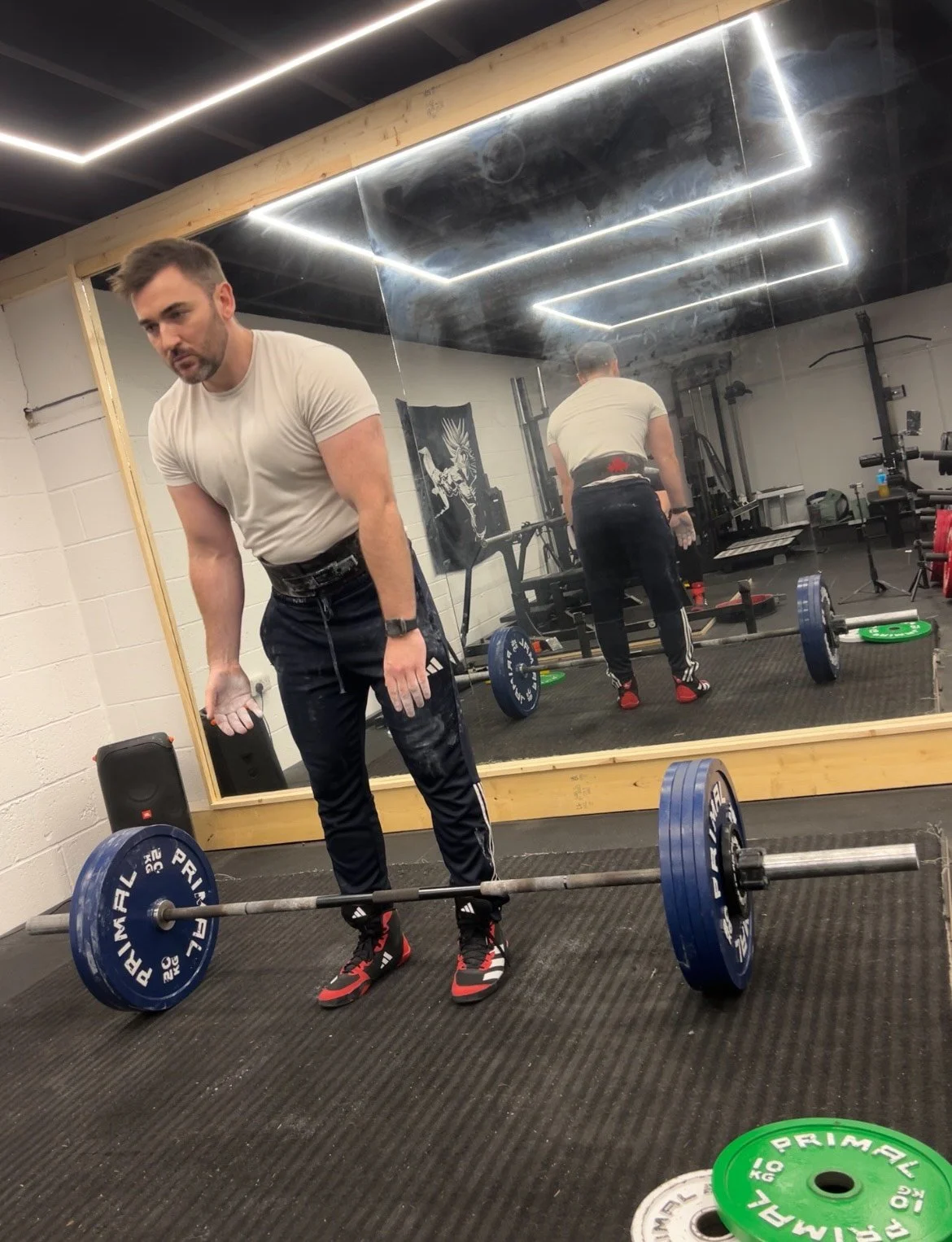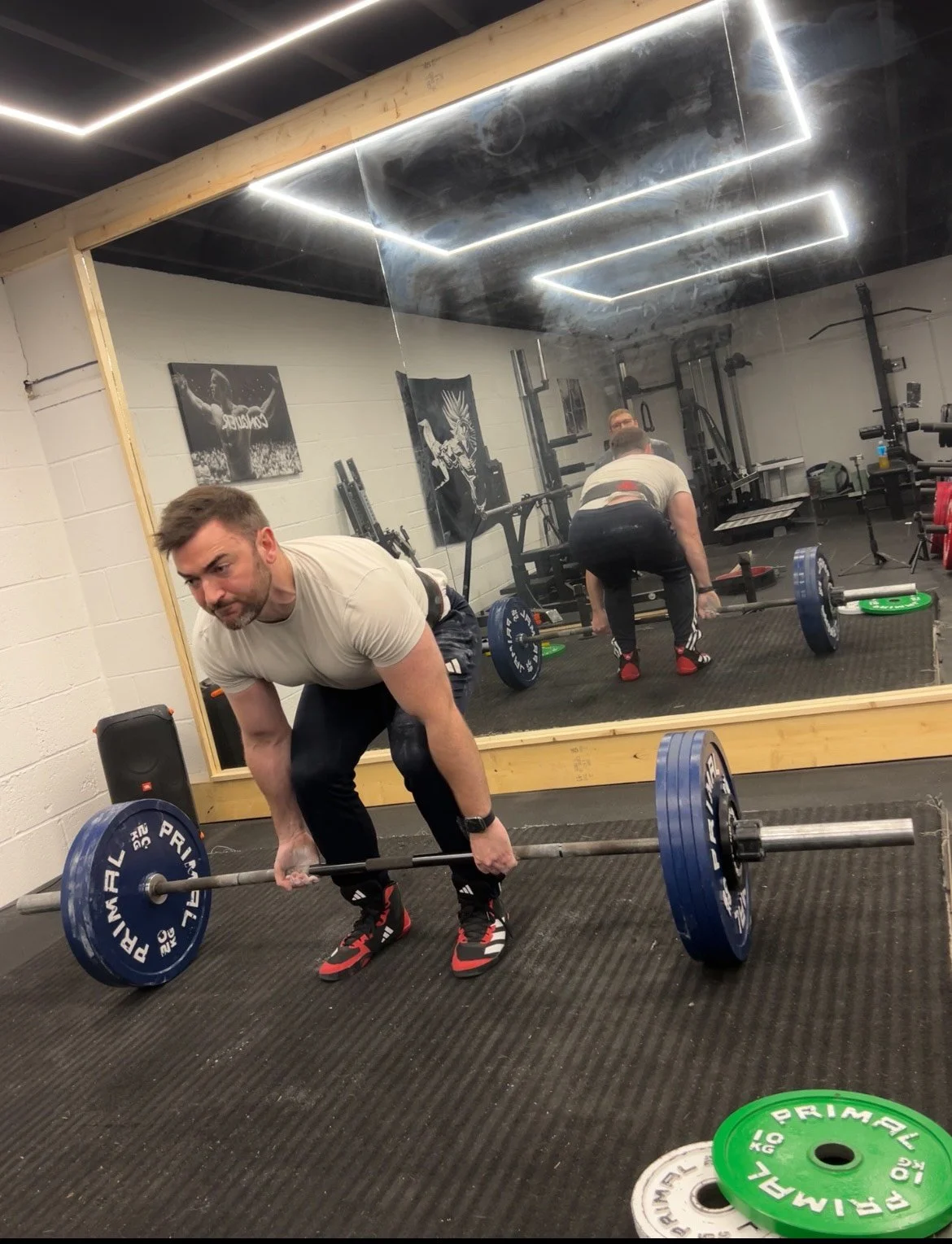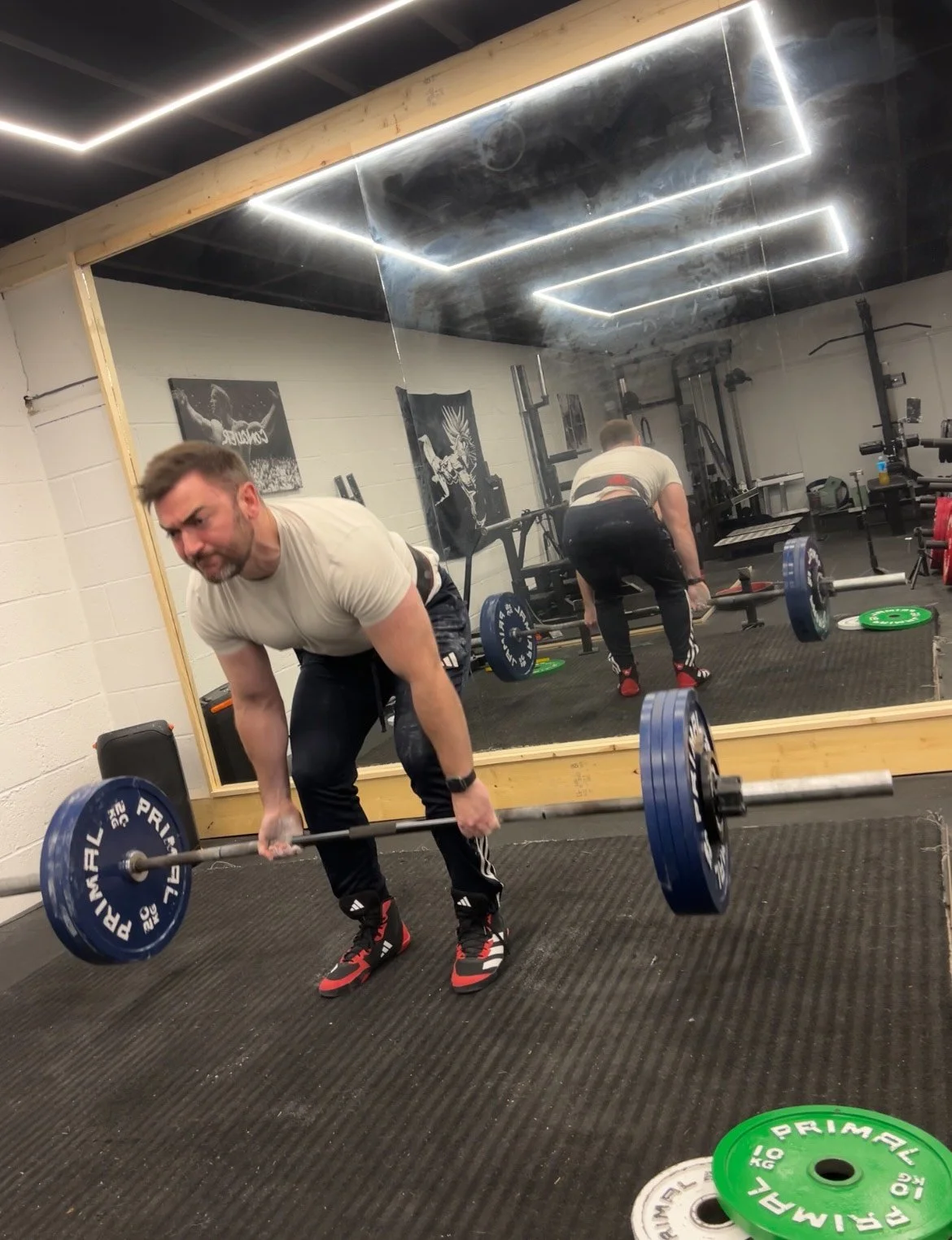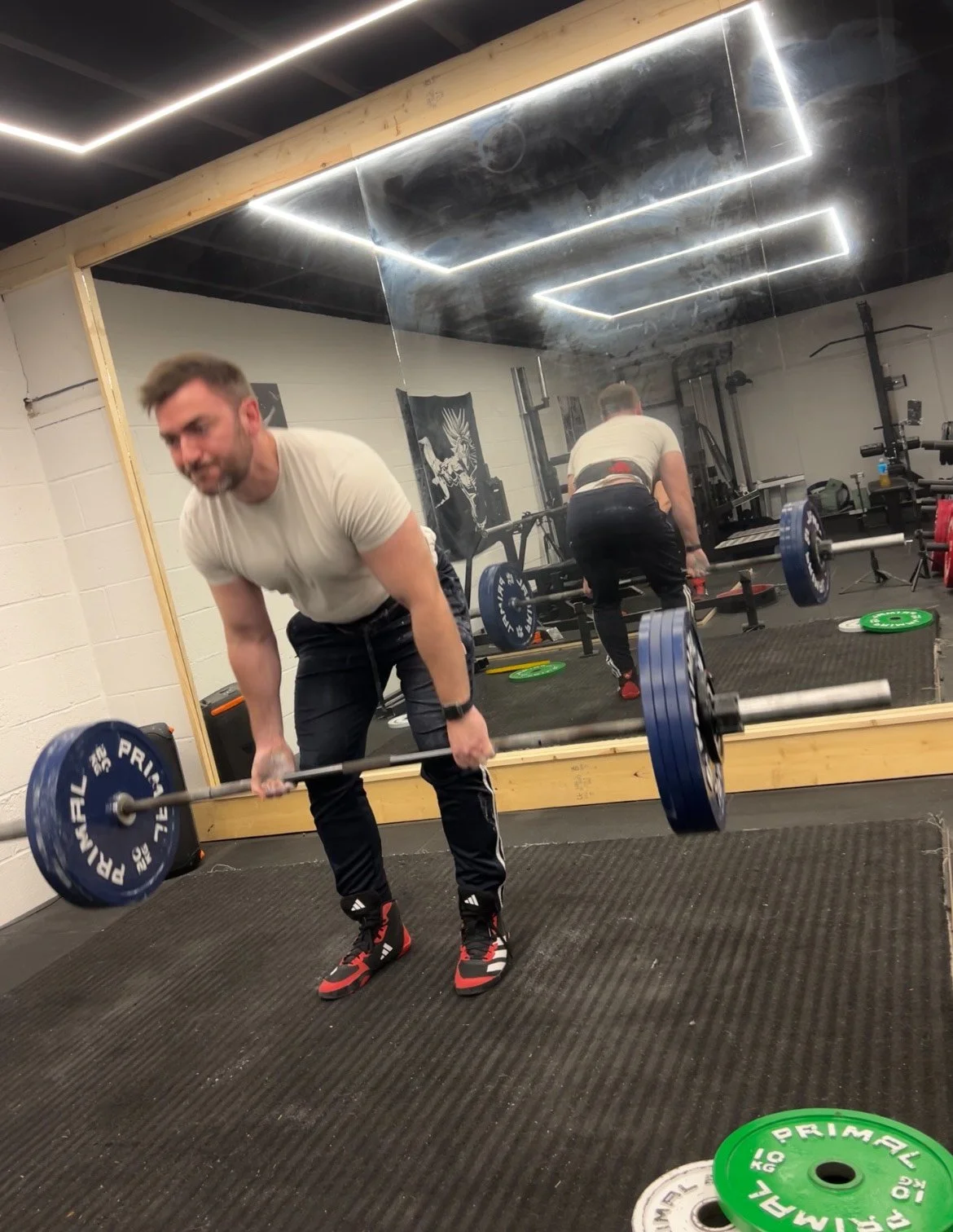The Deadlift: The Most Controversial Lift in the Gym
There aren’t many exercises that divide opinion quite like the deadlift.
For some, (me included) it’s the ultimate show of strength - raw power, total body engagement, and an honest test of what you can really lift.
For others, it’s a lower back destroyer that should be avoided at all costs and if you do them say goodbye to your spinal integrity.
The truth lies somewhere in between. When performed correctly, the deadlift is one of the most valuable, time-efficient, and transferable exercises you can include in your training. Done poorly, it can just as easily become a source of frustration, strain, and setbacks.
But the deadlift itself isn’t the problem. It’s usually how it is approached.
Why the Deadlift is So Controversial
The deadlift exposes everything - strength, mobility, coordination, and sometimes ego. It’s brutally honest. There’s no hiding behind machines or isolation work; it’s just you, a barbell, and gravity.. it’s a deadweight with no stretch reflex, hence the name.
Because of that, it often gets blamed for issues that come down to poor setup or load management. If you round your back, yank from the floor, or chase numbers before mastering position, it’ll bite back. But if you respect it and build up properly, it’s a very good use of your time.
I had this conversation with a friend & client recently who does downhill mountain biking. He rides down black trails that are pretty dangerous. He asked me if I was ever worried about hurting myself deadlifting and I said not really, I practice at the appropriate loads and have acquired a decent level of skill. It would be as dangerous as his biking would be in the sense that if I hopped on a mountain bike day 1 and joined him on a black trail, I’d almost certainly hurt myself. You have to start super light and work on skill acquisition and conditioning your body including any weak links over time.
It’s also become controversial because of the social media culture around lifting - big weights, loud lifts, and little context. In reality, most people don’t need a powerlifter or strongman’s deadlift. They just need to move well, build strength safely, and own that pattern for life.
The Muscles Worked: Everything from Heels to Hands
The deadlift is as close to a full-body exercise as you can get.
From the moment you grip the bar to the moment you lock it out, almost every major muscle group is working.
Hamstrings and Glutes: The main drivers of hip extension. They do the heavy lifting through the middle of the range.
Quads: Help initiate the lift off the floor, particularly in conventional and sumo variations.
Erector Spinae and Lats: Keep the spine and torso rigid under load, resisting flexion.
Traps, Rhomboids, and Rear Delts: Maintain shoulder position and help stabilise the upper back.
Forearms and Grip: Work isometrically to hold onto the bar - one of the biggest hidden benefits.
Core: Works throughout as a stabiliser, creating internal pressure to protect the spine and avoid rounding.
It’s this level of full-body demand that makes the deadlift so effective. You don’t just get strong legs or a strong back - you get stronger everywhere.
Deadlift Muscles Worked
This image breaks it down nicely, I couldn’t give you a percentage of muscles in the body worked without just outright lying but I’d estimate it to be around 60-70%.
How to Set Up for a Proper Deadlift
A great deadlift starts before the bar even moves.
Here’s a simple setup you can teach or follow yourself:
Bar Position: The bar should be over the middle of your foot, roughly one inch from your shins.
Foot Stance: About hip-width apart for a conventional deadlift, wider if you’re a bigger person.
Grip: Hands just outside your legs. Use a double overhand grip until grip becomes the limiting factor.
Hips and Back: Drop your hips until your shins touch the bar, keep your back flat, and cue chest up.
Brace: Big breath into the belly, feel the ribs expand sideways, and hold that pressure throughout.
Pull the Slack Out: Engage the lats and create tension before lifting. I imagine squeezing something in my armpits.
Drive the Floor Away: Push through your heels, extend the hips, and stand tall. Your arms are just hooks.
Lockout: Finish with glutes squeezed, not an excessive lean back and knees locked out.
Return Under Control: Reverse the movement, keeping the bar close an stay tight in between reps.
A good deadlift feels tight, balanced, and controlled - not rushed or jerky. The bar should move in a straight line, close to your body from start to finish, control the weight down - don’t drop it you’re wasting time under tension from controlling the weight down instead of letting gravity do its thing.
The deadlift is one of few lifts that starts with the concentric first, so the eccentric part of a lift is the ‘lowering portion’. Take the squat for example, you squat down first you benefit from the stretch reflex and get a little bounce back up.. you don’t get this with the deadlift, you have to build tension against the bar first because of that and ensure you’re tight before attempting to lift.
I’ve screenshotted some points in the set up and deadlift from a recent lift of my own so that I can talk through them.
Step 1
I set up with the bar over the middle of my visible foot - this is around 1 inch away from the shins in my case. I’m cueing in my head ‘long arms’ I’m driving them down to make them as long as possible so that my lats are nice and tight and I’m getting ready to take a big breath in and hold it throughout the entirety of the rep.
Step 2
I push my hips slightly back and drop them down until my shins meet the bar - I grip either side of my legs (hip width stance) and I’m holding my core really hard at this point and I’m pulling the slack out of the bar by pushing my legs into the ground a little bit and having my lats really tight. The way I cue this is by pretending I’m trying to squeeze and orange in my armpits or another weird one is like you’re resisting being tickled under the arms. - You can see that I’m building tension into the bar because my face is showing signs of exertion even at this point.
Step 3
Ok, so with Step 1 & 2 complete, I am now driving my legs into the ground. My arms are just hooks and my torso is rigid because I’m bracing my core hard and I still have my lats locked. The lats being tight keeps the bar from going out in front of me and ensures it stays close to my body. At this point it is a leg press to break the weight from the floor, you are thinking about leg pressing the earth away.
Step 4
Once the bar is above my knees I go from ‘leg pressing’ to thrusting my hips forward explosively. This is recruiting more of the posterior chain, this will allow me to stand tall and lock my knees. I hold it there for one second, let some air out, get another breath in and brace again for the descent.
Step 5
I’m reversing the movement here so instead of thrusting my hips forward I’m pushing them back whilst braced and I’m keeping the bar close to my body. Once it gets back to around knee height I’ll drop my hips until the bar hits the floor.
Step 6
I return the bar to the ground, in a controlled fashion just enough that I can keep the tension on the bar for the next rep. If I’ve done all of this correctly I’m in the perfect position to initiate the next rep.
Step 7 - Putting it all together
Why You Should Deadlift
If you want to get strong efficiently, few exercises deliver more per rep than the deadlift.
It’s time-efficient. One lift that targets your entire posterior chain, builds grip, and challenges your core stability.
It carries over to everything. Picking things up off the floor, sprinting, jumping, carrying - all benefit from stronger hips and a more stable trunk and back.
It builds real-world strength. This isn’t “gym-only” muscle. The ability to safely lift, carry, and move weight through space is one of the most transferable skills in training.
It trains the hinge pattern. One of the fundamental human movements, and a key to long-term back health when performed properly.
For busy people who want maximum return for their time in the gym, the deadlift is a clear winner. No need for 10 different exercises for your back and hamstrings.
How It Transfers to Real Life
The strength you build in the deadlift doesn’t stay in the gym.
It shows up when you pick up a heavy box, carry your kids, move furniture, or even when you bend down to tie your shoes without your back twinging.
It improves posture, coordination, and confidence in movement. You become aware of how to use your hips rather than your spine to lift - which is one of the most important lessons for long-term back health.
And perhaps most overlooked: it builds grip strength, a key marker of overall health and longevity. Research consistently links grip strength to reduced risk of injury, better metabolic health, and even longer lifespan. It’s a simple, measurable sign of how capable your body is.
Longevity and the Deadlift
Many people associate the deadlift with youth, ego, and heavy loads. But when coached well, it’s a movement for longevity, not just performance. I have a 74 year old client currently who is benefitting from the barbell deadlift.
Think about what it trains:
Hip strength and stability (protects knees and back)
Postural muscles that support you day to day
Grip and forearm strength (linked to independence as we age)
Core bracing and balance
Even lighter or modified deadlifts - such as trap bar, kettlebell, or Romanian variations reinforce the same qualities. The goal isn’t to chase a number forever. It’s to maintain a strong, functional body that can handle life’s physical demands.
Where to Start
If you’re new to deadlifting, start simple:
Master the hip hinge. Learn to push the hips back while keeping the spine neutral
Start with a Kettlebell or Trap Bar Deadlift. Both are more forgiving on setup and easier to learn.
Keep reps moderate (4–6 range). Enough to build technique without fatigue breaking form.
Add load slowly. Strength takes time; control and skill acquisition first.
Film or have a coach check your form. Small adjustments in setup often make the biggest difference.
Remember: the goal isn’t to max out - it’s to build up. A technically sound 80kg deadlift will always be worth more than a sloppy 140kg pull.
A Good Deadlift Is a Lifetime Skill
The deadlift has been unfairly demonised in some corners of the fitness world, but it remains one of the most effective and rewarding lifts you can do.
It teaches discipline, control, and strength that genuinely improves your life outside the gym.
You don’t have to lift huge numbers to get huge benefits - you just need to lift well, and lift consistently.
If you train with intent, build your technique patiently, and progress with purpose, the deadlift becomes far more than a lift - it’s a skill for life. I will caveat this with if you have had issues with your back in the past it is worth speaking to a professional before doing such exercises and I’d recommend having a few sessions with a coach who knows what to look for. Even so, if you have back issues even learning to hinge with bodyweight will likely benefit you.
If you want help putting this altogether in person in the Yorkshire area, drop me a message on my contact page.







